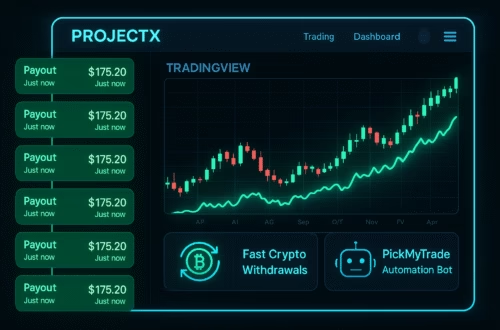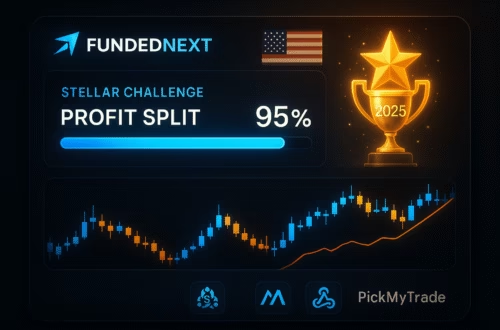Passing an equity-based prop challenges is tough enough — but doing it as a scalper? That’s a whole different game.
With tight drawdowns, strict daily loss limits, and rules that can kill a strategy before it starts, many traders fail before they even hit their profit target.
But here’s the truth: scalpers can pass prop challenges… if they prepare for the real-world constraints and design their trading plan accordingly.
After digging through prop firm rulebooks, broker requirements, and real execution data, I’ve boiled it down to five scalper-friendly rules that give you a much better shot at success.
1 — Start with the Right Account Architecture
Before you think about setups or indicators, you need to know whether your account even allows you to scalp.
Many equity prop challenges run through brokers that enforce Pattern Day Trader (PDT) rules — which means you’ll need $25k in a margin account to day trade freely.
If you don’t meet the requirement, you have three options:
- Trade a cash account (slower — you wait for settlement).
- Use a prop account structure that bypasses PDT internally.
- Switch to a challenge/broker designed for intraday traders.
Pro tip: Always get the firm’s answer in writing. If there’s ever a dispute later, you’ll have proof.
2 — Build Micro-Risk Sizing and Strict Daily Caps
Scalping thrives on small, frequent wins — but one big loss can wipe out your evaluation.
Most prop firms enforce daily loss limits and max drawdowns, so you can’t afford to risk too much per trade.
What works well:
- Fixed dollar risk per trade (e.g., $50 risk per setup).
- Hard daily stop — the lower of 1% account risk or the firm’s official limit.
- Max trades per day — keeps you from revenge trading.
Once you hit your daily stop or trade limit, you’re done for the day. No exceptions.
Click Here to Automate Prop Firm Trading
3 — Only Trade Ultra-Liquid Symbols
Scalping in illiquid names is a death sentence.
Why? Because slippage eats your edge. Even a few cents of bad fill can turn a winning strategy into a losing one.
Stick to:
- High-ADTV symbols like SPY, QQQ, AAPL, MSFT, AMZN.
- Core market hours for best liquidity (9:45–11:30 ET and 13:30–15:30 ET).
- Limit orders when possible — market orders only if your setup requires instant execution.
Your goal is predictable fills at minimal cost.
4 — Model Costs and Slippage in All Testing
Backtests that ignore execution costs are lying to you.
In real markets, you’ll pay commissions, cross the spread, and face slippage — even in liquid names.
How to make it real:
- Add a per-trade cost model to your backtests (commission + 2 bps spread cost as a baseline for large caps).
- Test in three phases:
- Historical backtest with cost model.
- Walk-forward test on the last 3–6 months.
- Demo forward test with actual fills.
- Compare modeled slippage vs. real slippage — if the real is >20% higher, tighten your entries or change symbols.
5 — Run Operational Safeguards Like a Pro
Even if your edge is good, operational errors can kill your challenge.
A bad webhook, duplicate order, or accidental restart can break consistency rules and flag your account.
Build in:
- Cooldown timers — block repeat entries for 30–60 seconds after a fill.
- Session filters — only allow trading in pre-set high-liquidity windows.
- Duplicate detection — make sure your automation doesn’t double-send an order.
- Full logging — keep timestamps, payloads, fills, and PnL records for every trade.
This protects your challenge account and gives you an audit trail if the prop firm asks questions.
A Quick Scalper’s Prop Challenges Plan
Here’s what a clean, compliant scalping plan might look like:
- Symbols: SPY, QQQ, AAPL, MSFT.
- Sessions: 9:45–11:30 ET and 13:30–15:30 ET.
- Risk per trade: $50 fixed.
- Daily stop: 1% or firm’s limit, whichever is lower.
- Max trades/day: 25.
- Orders: Limit entries, bracket with SL/TP.
- Cooldown: 30s per symbol after each trade.
- Testing: 500 demo trades before going live.
Final Word
Prop challenges are designed to test discipline as much as trading skill — and scalpers have to pass both tests.
If you follow these five rules, you’ll avoid the most common pitfalls: PDT restrictions, oversized losses, bad fills, cost surprises, and operational slip-ups.
Pass your challenge once, and you’ll have a repeatable, rules-based system you can scale into a funded account.
Also Checkout: ProjectX vs. Rithmic: Which One Should You Use for Bulenox or DayTrader?





